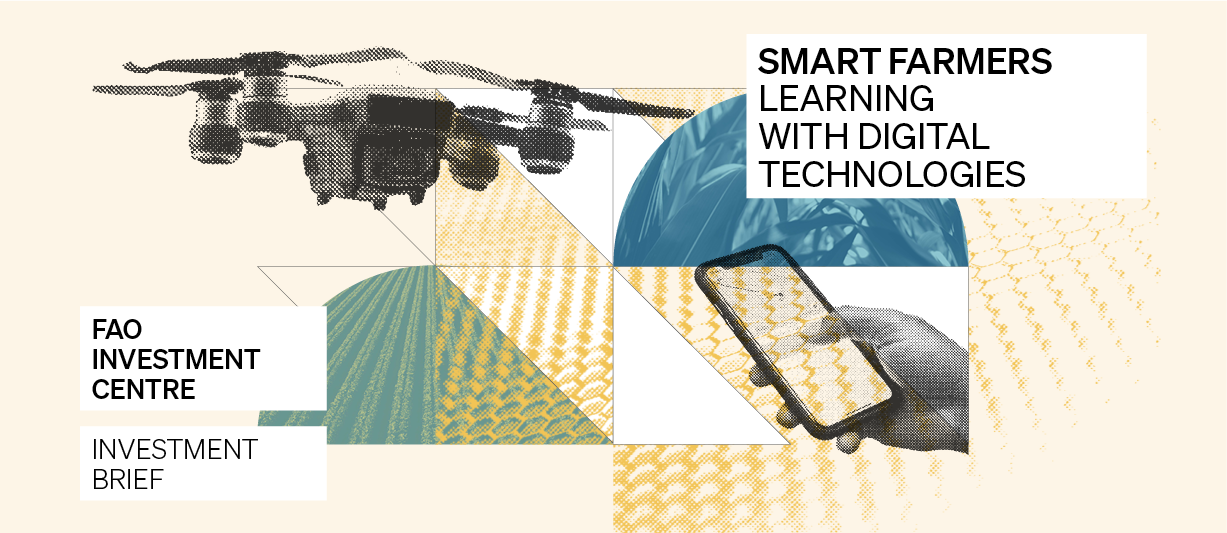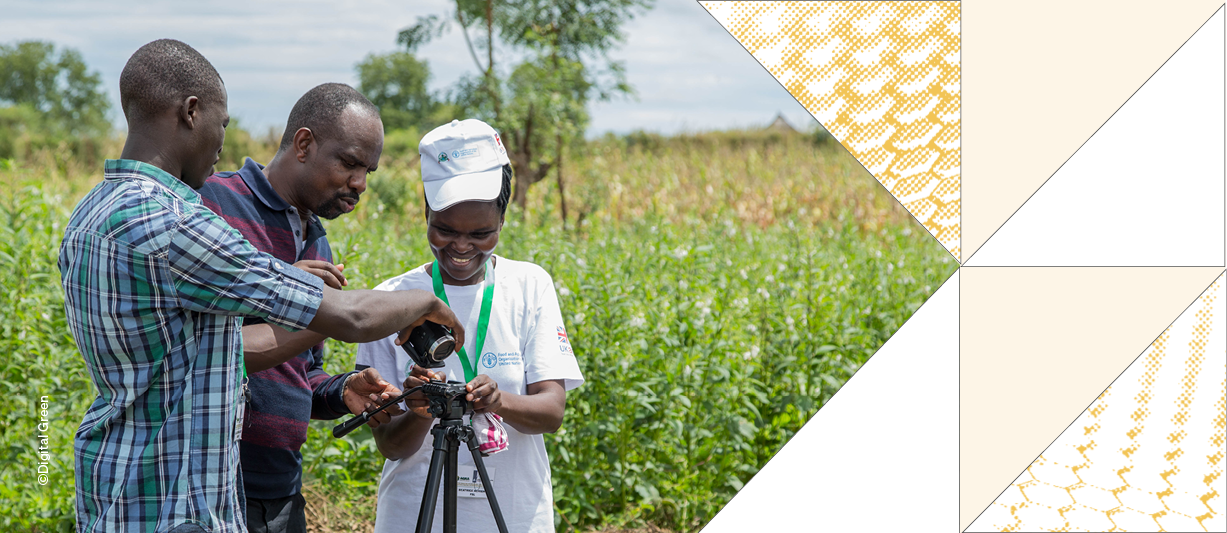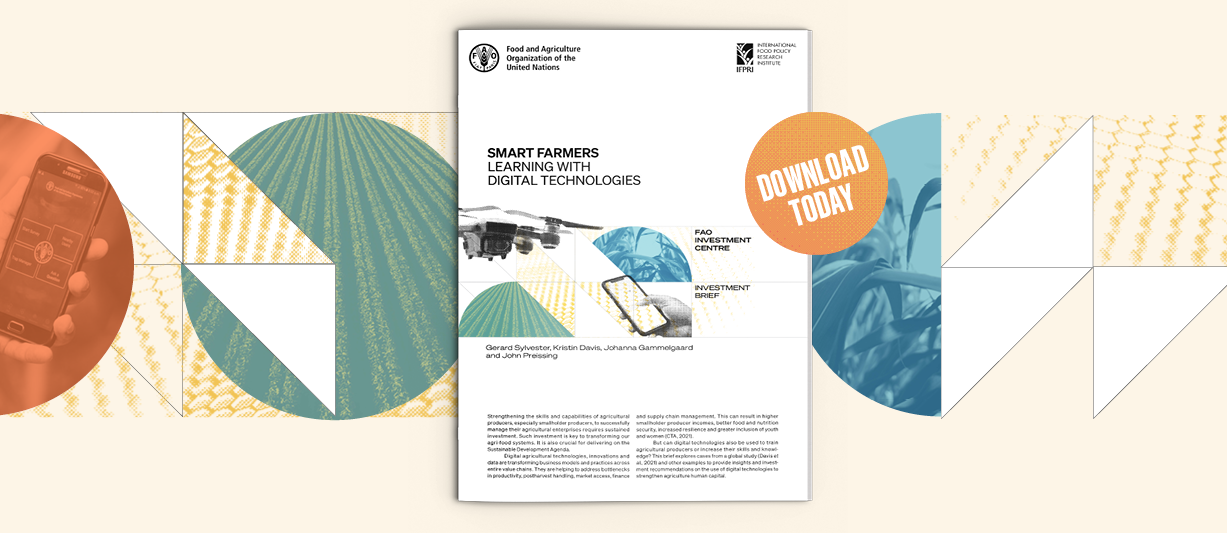Smart farmers: learning with digital technologies

Digital technologies are transforming agriculture, helping to address bottlenecks in productivity, postharvest handling, market access, finance and supply chain management.
But how can digital technologies also be leveraged to increase the skills and knowledge of agricultural producers?
A new investment brief – Smart farmers: learning with digital technologies – showcases some successful initiatives and identifies areas where digital interventions can help strengthen and sustain agriculture human capital.
It draws from a global study on investing in farmers produced by the FAO Investment Centre and the International Food Policy Research Institute (IFPRI), with support from the CGIAR Research Program on Policies, Institutions, and Markets and the FAO Research and Extension Unit.
Investing in strengthening farmers' capacities is key to making agri-food systems more efficient, sustainable, inclusive and resilient, argues FAO Investment Officer Gerard Sylvester and co-author of the brief.
"Understanding the levels and linkages in the rural milieu and how to leverage digital technologies to build human capital for agriculture is pertinent to implementing successful interventions aimed at overcoming agri-food challenges and building resilient farming communities," he says.

Different entry points
The brief looks at different ways digital technologies can strengthen farmers' knowledge and skills.
In Kazakhstan, for example, the country's Dairy Union launched a Smart Milk portal that serves as a 'one-stop shop' – accessible by smartphone or tablet – on good practices and food safety standards along the entire dairy supply chain, from farm to table.
In Colombia, WhatsApp Ganadero, a virtual community of the Colombian Cattle Growers Federation, is connecting more than 19 000 Colombian livestock producers organized into regional groups. The platform features sectoral news, livestock fair dates, regional climate forecasts, weekly livestock market prices and vaccination cycles. Producers can exchange ideas, network, promote their products and identify new business opportunities.
Digital technologies are also opening up opportunities for rural entrepreneurs, including women and youth. Kuza One in Kenya, for example, uses a digital platform that trains young last-mile rural agents to provide in-season agro-advisories to improve the productivity, resilience and incomes of smallholder farmers. The platform also links these young entrepreneurs and their smallholder customers to products and services through a digital marketplace.

Recommended investment areas
The brief points to the importance of strengthening policy, regulatory and incentive frameworks for better use of digital technologies, like extending broadband and mobile coverage. Policies should also provide incentives for the private sector to be more involved in improving the digital skills of rural communities.
Better communication, coordination and cross-sector collaboration among stakeholders are essential, as is investing in strengthening ecosystems and institutional infrastructure to support human capital development through digital technologies.
Bridging the digital divide so that rural communities can participate fully in the digital economy is also essential. That means increasing marginalized groups' access to and use of digital technologies through public policies, developing customized and appropriate digital tools in relevant languages, and reducing the cost of digital technology adoption through targeted subsidies, where applicable.
The challenges facing today's agri-food systems are enormous, from feeding a growing global population with food that is safe, nutritious, affordable and healthy to combatting climate change. Increasing the knowledge and skills of agricultural producers can contribute to better market access, greater climate resilience, disaster risk management and local economic development through decent jobs and higher incomes. And digital technologies can help strengthen those capacities more effectively and efficiently.

